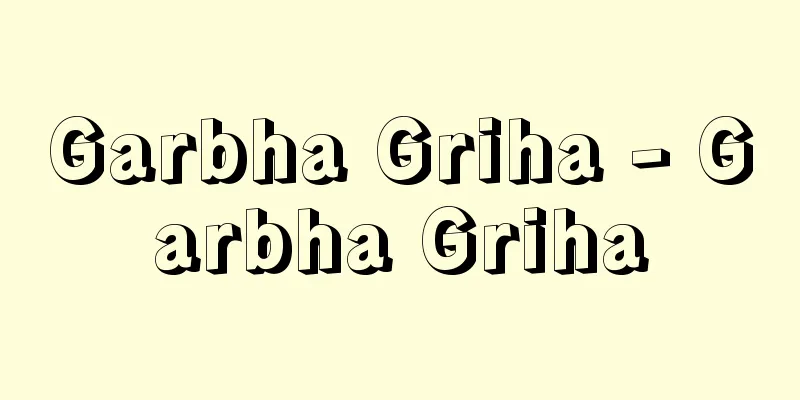Calendar - Koyomi

|
The Japanese Book of Books states that Koyomi means "calendar days, meaning "day reading," and is a name given to the fact that it is something that is counted two or three days and considered accordingly." It also states, "In ancient Japanese, Ko means "details," and Yomi means "counting numbers," and is similar to the detailed counting of dates and times." Motoori Norinaga wrote in his book Shinreki-ko, "The term 'Koyomi' is used to refer to counting the days, but it is also used to refer to the number of sutras that have been passed down, one after another, and is a name that comes from the fact that they are counted." In Japanese, 'Koyomi' means to count days. The calendar is a way of counting the passage of time over a long period of time. In contrast, the Chinese character "calendar" means a record of seasonal times, laws, etc., recorded daily by calculating the movements of the sun, moon, and stars. In both Japan and China, the method of counting time is the calendar system. Calendars are books that record the public times predicted in the future by estimating them using this calendar system. The calendar has two meanings. A calendar is a way of measuring the passage of time. The intangible abstract concept of time is of philosophical interest, but its essence is not important when considering calendars. Scientific measurement requires units. Length and mass are measured by comparing them to a standard meter ruler or a 1 gram weight and then multiplying it by a certain number. However, time, which flows forever, cannot be measured by comparing it to a fixed, predetermined standard. We know the flow of time from the sense of time before and after an event occurs. Therefore, as a standard measure of time, we must choose a periodic natural phenomenon that repeats the same state from the movement of an object changing position, or create a machine that repeats the same exact movement. The former condition is met by the rotation of the Earth, and the latter by a clock. The rotation of the Earth is one day, which repeats the light and darkness of day and night and the daily life of humans. The unit of time, one second, derived from one day, was thought to be one of the basic physical quantities that exists in nature and is unchanging. However, the development of astronomy revealed that there are slight changes in the one-day period of the Earth's rotation, and it was decided to define the one year of the Earth's revolution around the Sun as the unit of time. In the calendar, in addition to the cycle of days and years, it is constructed with the cycle of the waxing and waning of the moon, and supplementary cycles such as artificial weeks and seasons are used. The time system is a system that divides one day into smaller parts to count time, while the calendar system is a method of measuring and counting time by using one day as a unit, months and years, and by cutting across the long flow of time, in accordance with human life. [Toshio Watanabe] History of the calendarCalendar occurrenceNot only human beings, but all things on earth are subject to the light and darkness caused by the rotation of the earth. It is clear that a day began as soon as human beings were born on earth. From then on, a day became the basic cycle of the calendar. As human beings adapted to the natural environment, learned about the seasons and used moonlight to maintain their survival by using nature, the concept of years and months arose, and eventually calendars that skillfully adjusted the relationship between days, months, and years were created. The process of the emergence and development of calendars differs depending on the natural environment, such as the geographical location, climate, and customs of each land, as well as the customs and religion of each ethnic group, but no ethnic group can be indifferent to natural phenomena. This is all the more true the greater the influence of natural phenomena. The calendar was born out of the needs of human life, and what governs life is the length of a day, a month, and a year. Life begins with the first day. The alternation of day and night is activity and rest. However, people did not know the exact length of a day from the beginning. From the light and dark caused by the rising and setting of the sun, people eventually came to know the length of a day from the sun's noon to its noon. [Toshio Watanabe] The origin of the lunar calendarIt is easy to understand that the changes in the appearance and brightness of the moon due to its phases of the moon were of great interest to uncivilized humans. Unlike today, in ancient times, utilizing moonlight was as important to life as the changes in day and night, and people would have been constantly searching for the cycle of the moon's phases. To know when the moon would begin to be visible in the western sky, watchmen were posted and shouted to announce the first sighting of the new moon in the western sky. In the Roman calendar, the first day of the month is called "calendar," which is said to have come from the act of shouting, and the word "calendar" is derived from this. As people counted the days by the phases of the moon, they came to know the approximate number of days in the cycle, 29 or 30 days. The repeated appearance of the moon from new moon to half moon, half moon to full moon, losing light from the full moon to half moon again, and then disappearing was an impressive phenomenon that anyone could see, and the moon naturally became the "master of time." However, in this state, people still only counted the days by the phases of the moon. On the other hand, humans began to notice various astronomical phenomena, such as the cycle of warm and cold weather, the flowering and fruiting of plants and the accompanying changes in the living conditions of birds and animals, and even changes in the altitude of the sun and the resulting length of shadow, the cyclical changes in the length of day and night, the rising and setting of the stars, and the differences in the stars visible in the night sky depending on the season, and came to know that there were longer periods of time than the phases of the moon. They also came to know that the seasons also had cyclical changes over the course of several phases of the moon. Thus, the first calendar system to emerge was the lunar calendar, in which days were counted according to the phases of the moon, and the seasons roughly returned to normal after 12 cycles. The fact that a month is 30 days even in the solar calendar, which is unrelated to the phases of the moon, is thought to be a vestige of the early calendar, when days were counted according to the moon. Humans also learned about the cycle of the seasons through changes in natural phenomena. For nomadic peoples who moved from place to place while hunting and fishing for food, the natural calendar would have been sufficient. However, when humans settled in fixed areas and transitioned to a life of agriculture and livestock farming, it became necessary to know the time of sowing and harvesting in advance, and to prepare the tools and seeds necessary for work. At this stage, people pay attention to the movement of the sun and know the seasons, but it is still the so-called natural year, and there is no reliable calendar system. The ripening time of grains and fruits depends on the weather conditions from year to year, and the flowering of trees, the yellowing of leaves, and the migration of birds are not constant. In the natural calendar, seasons come early and late, and are far from a year determined by astronomy. When people began to need festivals and sacrifices to the gods as a way of praying for and giving thanks for a bountiful harvest, it became necessary to correctly know the length of the seasonal cycle in order to hold the festivals at the most appropriate seasons. To reach this stage, human culture must be quite advanced, for the correct timing of the seasons requires astronomical knowledge. [Toshio Watanabe] The Origin of the Lunisolar and Solar CalendarsAgriculture, which is the basis of life, cannot be separated from the seasons. Counting days by the phases of the moon has nothing to do with the seasons. Seasons require a solar calendar based on the movement of the sun. To precisely know the cycles of the phases of the moon and the cycles of the changing seasons requires astronomical knowledge. Calendars cannot exist apart from numbers. Neither the cycles of the phases of the moon nor the cycles of the seasons are integer multiples of a day, but have decimals. In order to combine these well, one must have reached a fairly high level of culture. Countries and peoples who developed calendar systems early were also cultured nations and peoples who developed early on. The length of a year, which has a cycle of seasons, can be determined by observing the time of sunrise and sunset of the sun, its change in direction, the change in the length of the shadow of a stick placed vertically on a horizontal surface at solar noon, or the fixed stars that rise and set in the early morning sky before sunrise and after sunset. For example, a specific season can be determined by repeatedly observing the sun setting at a certain point on the horizon. Stonehenge in England is said to be one of these ruins. In China, India, Persia, and Arabia, 28 or 27 constellations were set along the ecliptic, the movement of the moon was observed, and the position of the sun was estimated from this. In Egypt, Babylonia, and other places, the zodiac was set by dividing the ecliptic into 12 equal parts, and the position of the sun was determined and the seasons were corrected. In Egypt, the length of a year was determined by observing the appearance of Sirius (the alpha star of the constellation Canis Major) just before sunrise during the flooding period of the Nile River. In Babylonia, the beginning of the year was determined by Capella (the alpha star of the constellation Auriga), which appears before sunrise. In ancient China, the star that determines the seasons was called Dragon. During the Yin dynasty, Antares (the alpha star of the constellation Scorpio, known in China as the Great Fire) was designated Dragon, and the fifth month of summer was determined by the midday sun. The seasons were also determined by the direction in which the handle of the dipper of the Big Dipper pointed. Thus, as culture developed, precise research into the movements of the moon and sun progressed, and with it the measurement of time developed. As a result, the lunisolar calendar, which counts days by the waxing and waning of the moon and adjusts the seasons, and the solar calendar, which counts days directly by the movement of the sun and adjusts them to the seasons, were born and developed. Both calendar systems arose in connection with the agricultural life necessary for human life, and the progress of calendar systems is the development of astronomy and the history of the development of human culture. [Toshio Watanabe] Calendar PrinciplesIn astronomy, the cycle of the waxing and waning of the moon is called the synodic month, and the cycle of the seasons is called the solar year (tropical year). Calendar systems exist to adjust the synodic month and solar year, which are necessary for human life. A synodic month is 29.530589 days, and a solar year is 365.24220 days (both values as of the beginning of 1900). Both of these cycles are not integer multiples of a day, but have fractions. The principle of calendar systems is to combine these fractions appropriately to create a convenient calendar that does not cause any discrepancies in the phases of the moon or the seasons. [Toshio Watanabe] Lunar CalendarThe first calendar system was a lunar calendar based on the lunar new moon. If the fractional days of the new moon are rounded down or up to 29 or 30 days (the former is called a small month and the latter a large month), and the long and short months are repeated alternately, the average number of days in a month is 29.5 days, and the difference from the new moon is 0.030589 days, so if this is repeated several times, the fractional days will accumulate and reach 1 day. Therefore, this amount is carried over to the small month to make a large month. Generally, the 1 day or month inserted for this adjustment is called a leap day or leap month, and a year that includes a leap day or leap month is called a leap year. This method of insertion is called the intercalary leap method. If we call 12 lunar months one lunar year, the total number of days is 29.530589 x 12 = 354.367068 days, and the fraction is about one day in two or three lunar years, so if we start with a long moon and repeat long and short moons, the total number of days is 354 days in 12 months, and one leap day is inserted into the last short moon of the second lunar year to make it a long moon. This means that 1 - 0.367068 x 2 = 0.265864 days are added too much. Therefore, every 8 lunar years will have 0.265864 x 4 = 1.063456 days, which is one day too many, so in 8 lunar years, one leap day is omitted and 3 days are added between 8 lunar years. In other words, 5 times 354 days and 3 times 355 days are added in 8 lunar years, making the total number of days 2835 days. Similarly, if you add 11 leap years of 355 days to 30 lunar years (10,631.01204 days), the total becomes 10,631 days, with an error of 0.01204 days, which can be easily adjusted. The Turks adopted the intercalary system, which inserts three leap years into 8 lunar years. It was the Islamic calendar that adopted the intercalary system, which inserts 11 leap days into 30 lunar years. The lunar calendar, which only considers the movement of the moon, is about 11 days shorter than a solar year, so when counting days using the lunar calendar, the dates in this calendar gradually shift away from the solar calendar, becoming 10 or 11 days earlier each year. [Toshio Watanabe] Lunisolar calendarNext, let us consider the lunisolar calendar. To adjust the fractions of the synodic months and solar years , we need to find integers i and j that satisfy 29.530589i = 365.24220j. Rewriting the above condition, we get i / j = 12.36827, so a solar year has a fraction of 0.36827 for every 12 synodic months. We can insert leap months to eliminate this fraction. Expressing this fraction as an approximate fraction, we get 1/2, 1/3, 3/8, 4/11, 7/19, etc. The fraction 1/2 is achieved by inserting a 30-day month once every two solar years to make it 13 months. This results in an average of 369 days in a solar year, which is not enough. 1/3 is achieved by inserting one leap month every three solar years, which results in an average of 364 days in a solar year, which is still not enough. The fraction 3/8 inserts three leap months into eight solar years, resulting in an average of 365.25 days in a solar year and 29.515 days in a lunar month, which is fairly accurate. The fraction 7/19 inserts seven leap months into 19 solar years, which is called the 19-year, seven-leap system. It was discovered by the Greek astronomer Meton in 433 BC and is called the Metonic system. It is also called the Zhang system in China. There are 19 solar years, which is 6939.6018 days, which is almost equal to 6939.6884 days, which is the number of days in 235 lunar months, including seven leap years of 13 months, in a 12-month lunar year. The Callipic system, which has a cycle of 76 years, four times 19 years, was discovered by the Greek Callipus in 334 BC. However, the total number of days in 76 years is 27,759, and the average number of days in a solar year is 365.25, and in China this calendar system is called the quadrant system. The lunisolar calendar has produced a wide variety of calendar systems due to its leap year system. The main ones are the Jewish calendar, Greek calendar, Babylonian calendar, Indian calendar, and Chinese calendar. Japan's ancient calendar system was imported from the Chinese calendar. [Toshio Watanabe] solar calendarThe solar calendar is very simple to use as a seasonal adjustment system because it is completely unrelated to the movement of the moon. The solar year is 365.24220 days, and if you use a calendar year of 365 days with the fractions rounded down, there will be a difference of about one year in 1500 years. If you use a year like this, the seasons and the calendar will be slightly out of sync every year. This type of year is called a floating year. The solar calendars of Egypt and Persia used floating years. The fraction of the solar year, 0.24220 days, reaches one day in four years, so if you add one leap day in the fourth year after three 365-day normal years to make a calendar year 366 days, the average number of days in a year will be 365.25 days. This solar calendar with a leap year every four years was created by Julius Caesar of Rome, and is called the Julian calendar. This calendar system is simple to use for leap years, but it causes a deviation of one day every 128 years. Therefore, by inserting 31 leap days into 128 years, we obtain a very precise calendar in which the average number of days in a year differs from a solar year by only about 1 second, but the leap day system is a little complicated and not convenient for chronological calculations. A calendar year in the Julian calendar differs from a solar year by 0.00780 days. This results in a difference of about 8 days in 1000 years, and adding one leap day every four years is too many, so Pope Gregory XIII established a calendar system that improves on this system by adding 97 leap days every 400 years. This is called the Gregorian calendar. In the Gregorian calendar, the average number of days in a year is (365 x 303 + 366 x 97) ÷ 400 = 365.2425 days, which is 0.00030 days different from the solar year, or 3 days in 10,000 years. In practice, such differences do not cause any disruption to daily life, the leap year system is simple, and this is the calendar system currently used by countries around the world. [Toshio Watanabe] CalendarA calendar is a book that lists (1) events that are predicted to occur in the future, and (2) events that are publicly or routinely carried out, arranged by day for the dates of a year that are organized according to a set calendar system. Usually, when people say "calendar," they are referring to calendars. (1) includes astronomical almanacs that list astronomical phenomena such as the positions of celestial bodies and solar and lunar eclipses, while (2) includes ordinary calendars used in the daily lives of citizens, which list annual events and other events. There are various types of calendars depending on their purpose. A celestial almanac is a purely academic item compiled for astronomers, listing the positions, distances, brightnesses, etc. of celestial bodies, as well as the celestial phenomena occurring during the year. Nautical almanacs and aviation almanacs were compiled from celestial almanacs for the convenience of sailors and aviators. The main celestial almanacs are the French Almanac (published annually since 1679, compiled by the Bureau of Longitudes based on the Paris Observatory meridian), the British Almanac (published since 1767, compiled and published by the Greenwich Observatory based on the Greenwich meridian), the American Almanac (compiled and published by the United States Naval Observatory since 1855), and the German Almanac (compiled and published by the German Astronomical Computing Office since 1776, but ceased publication in 1959). In Japan, the Navy Hydrographic Department published the "Celestial Position Tables" from 1943 (Showa 18), and after World War II, the Hydrographic Department of the Japan Coast Guard published them, but these publications ended with the 2010 edition. These ephemeris books had an accuracy of less than 0.1 arc seconds and were intended for professionals. The "Calendar and Phenomena Table" in the "Science Almanac" compiled by the Tokyo Astronomical Observatory is less accurate but is simplified and intended for the general public. Common calendars, which are necessary for daily life, are created based on this astronomical almanac, and are filled with events, seasonal times, and calendar notes necessary for daily life. In addition, small societies such as schools have academic calendars to run the school, shrines have ritual calendars that record the annual rituals, farmers have agricultural calendars that tell them when to sow and harvest, and office workers have the simplest calendars to know the seven days of the week and holidays. There are various common calendars, from individual small societies to large ones such as national calendars that record annual events and seasonal times held by the state. In addition, there are miscellaneous calendars that record unscientific matters such as fortune calendars that tell a person's fortune based on their date of birth, and heirloom calendars. [Toshio Watanabe] Calendar in JapanThere is a question as to whether or not there was a calendar in ancient Japan, but today it is believed that it was a "calendar of the heavens and the earth" as described by Motoori Norinaga in his Shinreki-ko, in other words a natural calendar that followed natural phenomena, and therefore there was no reliable calendar. According to the Nihon Shoki, in the sixth month of the 14th year of the reign of Emperor Kinmei (553), an imperial edict was issued to "send the Inner Minister to Baekje to have doctors of medicine, fortune telling, and calendars take turns being appointed, and to send divination books, calendar books, and various medicines." The following year, calendar expert Kotoku King Hoson came to Japan. This is thought to have been the first time that the calendar was introduced to Japan, but it was not yet in general use. In 602 (the 10th year of the reign of Empress Suiko), a Baekje monk named Kanroku presented a calendar book. It is said that at this time Yang Hu Shizu Yu Chen (the grandfather of Yang Hu Shizu) studied the calendar system, but it is not known what type of calendar system it was. The first official history states that the calendar was officially adopted and put into practice in 690 (the 4th year of the reign of Empress Jitō), when in November of that year, two calendars, the Genka and Giho calendars (both Chinese calendars introduced from the continent), were used by imperial decree for the first time. However, there are problems with two calendars being used side by side at the same imperial court, and Nakane Genkei of the Edo period claims that the Genka calendar was used from 692 (the 6th year of the reign of Empress Jitō) and the Giho calendar was used from 697 (the 1st year of the reign of Emperor Mommu). Then, in August of 763 (the 7th year of the reign of Tenpyō Hōji), the Giho calendar was abolished and the Taien calendar was used (Shoku Nihongi). In 780 (Hōki 11), Hakuri no Omitasuku, head of the records of Japanese envoys to the Tang Dynasty, brought back the Goki calendar, and an imperial order was issued to use it to create a calendar from 781 (Tenō 1). However, there was no one to study it, so the Daien calendar continued, and the Sandai Jitsuroku records that the Daien calendar was used for 100 years. In 856 (Saihō 3), Okasuga no Ason Manomaro petitioned the shogunate to create a calendar based on the Goki calendar, but the following year he was ordered to "make both the Daien and the Goki calendars compatible." In 859 (Jogan 1), the Changkei Senmyo Calendar was submitted from Bohai, and in 861 (Jogan 3), at Manomaro's request, the Senmyo calendar was created. The Senmyo calendar was used for a long period of 823 years, until the Jokyo calendar by Shibukawa Harumi was adopted. The Senmyo calendar is said to be a good calendar from the Tang Dynasty, but no matter how excellent a calendar is, if it is used for over 800 years, the seasons will become out of sync. For example, the average number of days in a calendar year in this calendar is 365.2446 days, which is about 0.0024 days longer than a solar year, so the error is two days, and the seasons on the calendar are two days behind reality. As such, Japan used the Chinese calendar as is for 1,000 years and did not have its own system of its own. When the calendar was first used, there was no calendar system, but during the Taiho era (701-704) of Emperor Mommu, the Onyo-ryo (Bureau of Onmyo) was established under the jurisdiction of the Ministry of Central Affairs, which was responsible for the study of calendars and astronomy. According to the Ryo no Gige, one calendar expert was appointed, and while creating the calendar, ten calendar students were also trained. The calendar expert created two volumes of the Guchu Gyoreki (Guchū Gyoreki), with the first volume covering the period before June and the second volume covering the period after July, as well as a total of 166 volumes. On November 1, the Onyo-ryo submitted the documents to the Ministry of Central Affairs, which then went to the Imperial Palace and presented them at the Nanden Hall. This was called the "Goryaku no Sou." After this ceremony, the minister distributed the calendars to the various offices inside and outside the country. When the Ritsuryo system was established, calendar doctors and astronomy doctors were appointed separately, but later, the grandson of the 6th Kibi no Makibi was Kamo Tadayuki, who was skilled in Onmyoujutsu, and his son Yasunori was appointed as Onmyou no Kami, but after Kamo's son Mitsuyoshi was taught the art of calendars and his disciple Abe no Seimei was taught the art of astronomy, the Kamo family inherited the art of calendars and the Abe family inherited the art of astronomy, and this continued until the end of the Edo period. The reason why nothing could be done about the two-day error in the "Senmei Calendar" was because of the successive wars, the decline of the Imperial Court, and the decline of scholarship, and also because there was no request for a new calendar book from the continent, but it is thought that it was because the hereditary calendar family was content with their family jobs and kept it secret and did not disclose it to the public, so there was no one to become the official calendar official. Tokugawa Ieyasu unified the country and put his efforts into the promotion of education and culture. As a result, various academic fields flourished and many researchers of calendar studies emerged, one of whom was Shibukawa Shunkai. At the end of the 17th century, when solar and lunar eclipses were recorded in the calendar but in reality they were not eclipsed, or vice versa, this attracted the attention of the public and led to the irregularities of the "Senmei Calendar" being pointed out. Shunkai was one of these researchers, and he personally observed the celestial bodies and created a new calendar, the "Yamato Calendar," modeled after the "Juji Calendar" of the Yuan Dynasty in China. He petitioned the shogun three times for calendar reform, and on October 29, 1684 (Jokyo 1), it was given the name "Jokyo Calendar," which came into effect the following year. This was the first time that a calendar created by a Japanese person and suited to the land of Japan was put into practice. However, the calendar system itself was a Chinese-style lunisolar calendar. Shunkai was appointed as an astronomer for the shogunate in recognition of his achievements in reforming the calendar, and from this point on the authority to create calendars was transferred from the calendar experts to the shogunate's astronomers, with the Kamo family only being responsible for writing calendar notes. The eighth Tokugawa Shogun, Yoshimune, was interested in astronomy and calendar science, and was so enthusiastic that he set up observation equipment in the Fukiage Imperial Gardens in Edo Castle and conducted his own observations. He had long intended to revise the calendar in accordance with the Western astronomy style. So he appointed Masayasu, the son of Nishikawa Joken, who was well versed in astronomy and geography in Nagasaki at the time, to the position of astronomy official. Masayasu came to Edo and made a living by lecturing on astronomy, and together with Shunkai's successor, Shibukawa Rokuzo Noriyoshi, Masayasu conducted surveys at the observatory set up in Kanda Sakuma-cho, Edo, and prepared for the calendar reform. He consulted with Tsuchimikado (Abe) Yasukuni, the head of the Onmyo clan. Yasukuni said that it would be difficult to determine the date without repeated measurements in Kyoto, so Seikyu and others went to Kyoto and carried out observations at the Umekoji Observatory. However, during this time, Yoshimune died (1751), and due to the discord between him and Yasukuni, Seikyu was dismissed, and at Yasukuni's discretion, the "Hōreki Kojutsu Genryaku" (the first calendar of the 1st year ... Around this time, Asada Goryu, who had escaped from the Kitsuki Domain (Oita Prefecture), was making a name for himself in Osaka as an astronomy and calendar scholar. In 1795 (Kansei 7), the shogunate decided to carry out Yoshimune's last wishes and revise the calendar based on Western astronomy, and appointed Asada Goryu to carry it out. Due to his old age, Goryu recommended two of his senior disciples, Takahashi Yoshitoki and Hazama Shigetomi, to carry it out. Itoki was appointed to the Astronomical Bureau, and carried out measurements in Kyoto with his predecessors Yamaji Yoshitsugu and Yoshida Hidenori, while Shigetomi carried out measurements with Okumura Kunitoshi of the Astronomical Bureau at the Asakusa Calendar Bureau in Edo. Preparations for the calendar reform were completed, and on October 19, 1797 (Kansei 9), Tsuchimikado Yasunaga petitioned the Emperor to decree the calendar reform, and the Kansei Calendar was implemented the following year. The Kansei Calendar indirectly incorporated Western astronomy through the "Rekisho Kosei Kohen" imported from China, and adopted Kepler's elliptical orbit theory for the movement of the sun and moon. In 1803 (Kyowa 3), Takahashi Itoshi obtained a Dutch translation of astronomical documents by the Frenchman J. J. L. Lalande and devoted all his energy to deciphering them, completing 11 volumes of the "Lalande Rekisho Kanken" in just six months, but died the following year at the age of 41. Itoshi's eldest son, Kageyasu, was appointed to the Tenmonkata to succeed his father at the young age of 20, but died in prison during the Siebold Incident. His younger brother, Shibukawa Kagesuke, took over from his brother and completed 40 volumes of the "Shinko Rekisho" in 1836 (Tenpo 7). The shogunate ordered the Tenmonkata to reform the calendar based on this in 1841. Kagesuke and the other members of the Tenmonkata proceeded with preparations for the calendar reform, and the following year the calendar reform was announced, with the "Tenpo Jin'in Genreki" coming into effect in 1844. The Tenpo calendar was the last excellent lunisolar calendar in Japan, and incorporated the fixed month and fixed season system. になったんです。 English: The first thing you can do is to find the best one to do. As the calendar reform imperial letter states that once every four years, it was not clear whether it was the Julian or the Gregorian calendar. Meiji 33 was 1900, and the Gregorian calendar was the norm, so the Imperial Ordinance of May 11, 1898 (Meiji 31) clearly stated that the Gregorian calendar should be leap law, and this continues to this day. The solar calendar adopted in Japan is called the new calendar, and the "Tenpo calendar" before the calendar change is called the lunar calendar. [Watanabe Toshio] Japanese calendar bookIn Japan's lunar solar calendar, the calendar book at the time when the calendar was first used was the Gusho calendar. This is a calendar that was hand-copyed in kanji and distributed to the court, government offices, and local Kokuga, and is also called the true name of the Gusho calendar. The name of the Gusho calendar was caused by the introduction of the good fortune, bad fortune, and taboos on the instrument. In addition, there was a seven-day calendar that states the daily position of the five stars of the sun, moon, and the like, but this is a type of celestial calendar. Its true identity is not clear, but there is something called the Chusei calendar, which is issued once every 70 years, and this was also a kind of celestial calendar. になったんです。 English: The first thing you can do is to find the best one to do. Among these, the Senshu calendar was aborted, and the Satsuma calendar had its own unique content that was different from other calendars. After the Meiji Restoration, the calendar was created by the Tsuchimikado family for a while, and calendar teachers from the old shogunate period were called popular calendars, but after that, they left the owner of the Tsuchimikado family and changed, and the calendar was published from Ise Shrine from the calendar in 1883 (Meiji 16). When an observatory was attached to the Faculty of Science at Tokyo Imperial University in 1888, the calendar was compiled by the observatory and published by Ise Shrine. From 1900 (Meiji 33), the main calendar published by the Ise Shrine Department and the abbreviated calendar that was abbreviated from this calendar. After World War II, the calendar was also a compiled and published by Ise Shrine. The calendar published by Ise Shrine is a calendar that should be the standard for regular calendars, but there are many other miscellaneous calendars published by local shrines and other local calendars, as well as a single-print pillar calendar that simplifies the regular calendar, and many other miscellaneous calendars. The pillar calendar is an abbreviated calendar that is easy to read by hanging on pillars and walls. The "big and small calendar" or "big and small calendars" that were popular during the Edo period, especially during the Meiwa to Tenmei period (1764-1789), and there are also calendars that are of interest in folklore, such as the "blind calendar" and "jujie calendar" that read calendar days using pictures instead of letters. [Watanabe Toshio] Natural calendar and agriculture and fisheriesBefore the knowledge of calendars became popular, we learned the passage of the days through natural operations. The natural calendar was used to learn about the seasons through the phases of the moon, flowering plants, the arrival of birds, and snow on mountains. Even today, in agriculture and fishing, this is an important knowledge for working planning. Knowledge of natural calendars is based on the years of experience of ordinary people and has been passed down through legend. Some of them are common throughout the country and local. In agriculture, the first thing that is important for rice cultivation is to know when the seedlings are sown. In the Tohoku region, the flower of the robust flowers is often called the tanemakizakura. This is because the time when these flowers bloom is a good season for sowing. In Yamamoto County, Akita Prefecture, the seedling cherry blossoms are a type of Yamazakura, and the flower of the robust flowers is called the tuchizakura. In Sado, when the robust flowers bloom, it is said that the robust flowers must be sown sown sowing beans (soybeans), and in the fishing industry, it is said that when these flowers bloom, sardines can be harvested. In Kanoashi County, Shimane Prefecture, when the robust flowers bloom, they must sow rice, and when they scatter, rice planting must begin. Regarding wheat, in the Kanto and Central parts of the Kanto region, the term mugimakidori is called mugimakidori, and on Oki Island there is a term called mugimaki geese. Both of these birds appear to represent the time of wheat sowing. It is practiced in various places that the beginning of farming is known by the shape of snow that has disappeared in the early spring, or the shape of the snow that has disappeared and the soil has turned black. Mt. Hakuba in Shinshu (Nagano Prefecture) is said to be the name of the name when the snow at the summit disappears and the shape of a shiroma (Shiroma). In the upper reaches of the Oi River in Shizuoka Prefecture and northwest of Yamanashi Prefecture, when the snow on Mt. Notori (Notori) disappears and only the shape of a bird appears to remain. The time for rice plant sowing is called Tanemakibozu, a time for rice plant sowing. Mt. Komagata, which is located on the border between Iwate and Akita Prefecture, is also the time for seeds sowing when the shape of a shiroma appears around the eighth station of the mountain. Natural calendars are also used for marine life. In Izu, squid is called barley squid, and squid is caught when the wheat ripens. In Akita, it is called kaminari, and when the wheat is ripe, it is called kaminari, and when the wheat is ripe, it is called kaminari, which is called kaminari, which is called kaminari, which is called kaminari, which is called thunder and fishermen hear the thunder and come out. In Hikawa District, Shimane Prefecture, it is called mugiwaradai, and when the wheat straw is picked, it is said to be fishing for Thai fish. Stars are also one of the natural calendars. In Shizuoka Prefecture, it is called "Subaruma Tokiko Hago", and when Subaru Star reaches the Chuten, if you sow buckwheat, 8 go (1.44 liters) of flour can be extracted from 1 sho (1.8 liters) of fruit. As mentioned above, unlike calendars, the natural calendar is consistent with changes in climate year by year, and is still used in agriculture and fishing as a guideline for production planning. [Ofuji Tokihiko] "Watanabe Toshio, "Japanese Calendar" (1976, Yuzankaku Publishing)" ▽ "Watanabe Toshio, "Everything about the Calendar" (1980, Yuzankaku Publishing)" ©Shogakukan "> The world's major calendar laws (Julian calendar and Roman calendar... ©Shogakukan "> The world's major calendar laws (Babylonian calendar, Greece... National Diet Library Collection "> Ise calendar Source: Shogakukan Encyclopedia Nipponica About Encyclopedia Nipponica Information | Legend |
|
こよみとは『和訓栞(わくんのしおり)』に「暦日をいふ、日読(かよみ)の義、二日三日とかぞへて其事(そのこと)を考へ見るものなれば名とせるなり」とあり、「また古語にコといひしは詳細の義あり、ヨミとは数をかぞふる事をいひけり、歳月日時を細かにかぞへしるせしものをいふに似たり」ともある。本居宣長(もとおりのりなが)はその著『真暦考』で「又日を数へていくかといふも、幾来(いくけ)経、暦をこよみとつけたるも、来経数(けよみ)にて、一日(ひとひ)一日とつぎつぎに来経(きふ)るを、数へゆく由の名なり」と述べている。日本語の「こよみ」は日を数える意である。長い時の流れを数える法が暦である。これに対し漢字の「暦」が意味するのは、日月星辰(せいしん)の運行を測算して歳時、時令などを日を追って記した記録である。 和漢いずれも時を数える方法が暦法である。この暦法によって推算して将来予知される公の時令を記したのが暦書であり、暦にはこの二つの意義がある。 暦は時の流れを計り数える方法である。時という目に見えない抽象的な概念は哲学的に興味ある問題であるが、その本質は暦について考察する場合には重要なことではない。 科学的に測定するには単位が必要である。長さ、質量を測るには、基準となるメートル尺や、1グラムの分銅と比べてそれの何倍として測るのであるが、永遠に流れてやまぬ「時」は、あらかじめ定められた一定の基準物と比べて測ることはできない。 時の流れを知るのは一つの事件の発生の前後感覚からである。そこで、基準となる時の物差しとしては、物体が位置を変える運動から、同じ状態が繰り返されるような周期的自然現象を選ぶか、あるいはこれと同じように正確に繰り返す機械をつくることである。前者の条件を満たすものは地球の自転運動であり、後者としては時計がある。地球の自転は、昼夜の明暗と、人間の日常生活を繰り返すところの1日である。1日から導かれる1秒という時の単位は、自然に存する物理学的基本量の一つであって不変なものと考えられた。ところが天文学の発達は、地球自転の1日という周期にわずかではあるが変化があることを明らかにし、地球が太陽を回る公転運動による1年をもって時の単位と決めることにした。暦においては、日・年という周期のほかに、月の満ち欠けする周期をもって組み立て、これに人工的な週、旬といった補助的な周期が用いられる。1日を細分して時を数える時制が時法であり、1日を単位として月・年を用い長い時の流れをくぎって人間の生活にあわせて時を計り数える方法が暦法である。 [渡辺敏夫] 暦の歴史暦の発生人類に限らず地球上にある万物は、地球の自転に起因する明暗に左右される。人類が地球上に生まれると同時に1日の生活が始まったことは明らかであろう。そこから1日が暦法の基本周期となった。人類が大自然の環境に順応し、自然を利用して生存を維持するために季節を知り、月光を利用することから年・月の概念が発生し、ひいては日・月・年の関係をうまく調整する暦法が発生してきた。暦の発生、発展の過程は、その土地の地理的位置、気候、風土といった自然環境と、民族の習俗、宗教などにより異なるが、いかなる民族も自然現象に対して無関心ではありえない。自然現象の影響が大きいほど、なおのことである。 暦は人類の生活の必要から生まれたものであり、生活を支配するのが1日、1月、1年の長さである。まず生活は1日から始まる。昼夜の交代は活動と休養である。しかし初めから1日の正確な長さを知ったわけではない。太陽の出没による明暗から、やがては太陽の南中から南中までの1日を知るようになる。 [渡辺敏夫] 太陰暦の発生月の満ち欠けによる月の形相と明暗の変化は、未開の人類には大きな関心を与えたことは容易に理解できよう。現代と違って、太古において月光を利用することは、昼夜の変化と同様、生活には重要なことであって、月の満ち欠けの周期を求めてやまなかったであろう。いつ月が西天に見え始めるかを知るために見張り人を立て、西天に新月が初めて見えたことを叫んで知らせた。ローマ暦で月の初日を「カレンデ」というが、これは叫ぶことに由来したといわれ、カレンダーという語はこれに由来するものである。月の満ち欠けによって日を数えているうちに、人はその周期の近似日数29日あるいは30日を知るようになる。月が新月から半月へ、半月から満月へ、満月から光を失ってふたたび半月へ、そして消失する形相の繰り返しは、だれもが見られる印象的な現象であって、月は自然に「時の支配者」となった。しかしこの状態では、まだ満ち欠けによって日を数えるにすぎなかった。 一方において、人類は寒暖の繰り返しや、それに伴う草木の開花結実、鳥獣の生活状況の変化などにより、さらに進んでは太陽高度の変化、それによって生じる日影の長短、昼夜の長さの周期的変化、あるいは星辰(せいしん)の出没、季節によって夜空に見える星の違いなど、いろいろの天文現象に気づき、月の満ち欠けより長い時のくぎりがあることを知るようになる。何回かの月の満ち欠けの間に季節にも周期的変化があることを知るようになる。かくして、まず最初に発生した暦法は、月の満ち欠けによって日を数え、これを12回繰り返すとだいたい季節も元に戻る太陰暦法であった。月の満ち欠けに関係のない太陽暦法でさえも1か月が30日であることは、暦の初めは月によって日を数えた名残(なごり)と考えられる。 また人類は、季節の循環を自然現象の変化によって知ったのである。狩りや漁(すなど)りに生活の糧(かて)を求めながら場所を移り変わる遊牧民族では、自然暦でも十分にまにあったであろう。しかし、人類が一定の土地に居住し、農耕、牧畜の生活へと移行すると、種播(ま)きや収穫のためにも、作業に必要な道具や種を用意するためにも、それらの時期をあらかじめ知っておくことが必要となる。この段階になると人は太陽の運行に注意し、季節を知るようになるが、まだいわゆる自然年であって、確かな暦法は存在しない。穀物や果実の熟す時期は、年ごとの天候状態に左右されるし、樹木の開花、黄葉、鳥の回遊も一定したものではない。自然暦では季節に早晩があり、天文学的に決まる1年とはほど遠いものがある。人が豊かな収穫を祈念し、また感謝するための手段として、神への祭りと生贄(いけにえ)を必要とするようになると、その祭りをもっとも適当な季節に行うために、季節の循環周期の長さを正しく知る必要が生じた。この段階に達すると、人類の文化はかなり進んでいなければならない。正しい季節の周期は天文学的知識を必要とするからである。 [渡辺敏夫] 太陰太陽暦と太陽暦の発生生活の基礎となる農耕は季節と切り離すことはできない。月の満ち欠けで日を数えることは季節とはなんの関係もない。季節は太陽の運行による太陽暦を必要とする。月の満ち欠けの周期と季節の移り変わる周期を精密に知るには天文学的知識を必要とする。暦法は数を離れては存在しない。月の満ち欠けの周期も季節循環の周期も、1日の整数倍でなく、端数がある。これをうまく組み合わせていくためには、かなり高い水準の文化に達していなければならない。暦法の早く発生した国家、民族は、早く文化の開けた国家、民族であった。 季節の循環する1年の長さは、太陽の出没時刻や、その方位の変化、水平な地面に垂直に立てた棒の太陽南中時における影の長さの変化、あるいは日の出前の暁天に、日没後の宵空に出没する恒星を観測することによって知ることができる。たとえば、地平線上の一定点に沈む太陽を繰り返し観測することにより、特定の季節を定めることができる。イギリスに残るストーンヘンジはその遺跡といわれている。中国、インド、ペルシア、アラビアでは、黄道(こうどう)に沿って28または27の星座を設けて月の運行を観測し、これから太陽の位置を推定した。エジプト、バビロニアなどでは、黄道を12等分した十二宮を設けて太陽の位置を知り、季節を正した。またエジプトでは、ナイル川の氾濫(はんらん)期の日の出直前にシリウス(おおいぬ座のα(アルファ)星)が出現することを観測して1年の長さを知った。バビロニアでは、日の出前に出現するカペラ(ぎょしゃ座のα星)によって1年の初めを定めた。古代中国では、季節を定める星を辰とよんだ。殷(いん)の時代アンタレス(さそり座のα星。中国では大火)を辰とし、夕方南中をもって夏5月とした。また北斗七星の柄杓(ひしゃく)の柄がさす方向によって季節を定めた。 こうして文化の発展とともに月・太陽の運行の精確な研究が進み、それに伴って時の測定は発展していった。その結果として、月の満ち欠けによって日を数え、季節を調節していく太陰太陽暦法(陰陽暦法)が、また直接に太陽の運行だけで日を数え、季節にあわせていく太陽暦法が発生、発展した。いずれの暦法も人間生活に必要な農耕生活と関連して発生したものであって、暦法の進歩は天文学の発展であり、人類文化の発展の歴史でもある。 [渡辺敏夫] 暦法の原理天文学では月の満ち欠けの周期を朔望月(さくぼうげつ)といい、季節の循環する周期を太陽年(回帰年)という。暦法は人類の生活に必要な朔望月、太陽年をいかに調節していくかにある。朔望月は29.530589日、太陽年は365.24220日(いずれも1900年初めの値)である。この両周期は1日の整数倍ではなく、端数がある。暦法の原理は、この端数を適当に組み合わせて、どのようにして、月の満ち欠けにも、季節にも狂いが生じないようにして便利な暦をつくるかということにある。 [渡辺敏夫] 太陰暦最初に発生した暦法は、月の朔望月による太陰暦法であった。朔望月の日の端数を切り捨て、または切り上げて29日、30日とし(前者を小月、後者を大月という)、大小の月を交互に繰り返すと、平均の1月の日数は29.5日となり、朔望月との違いは0.030589日であるから、何回か繰り返していると、端数が積み重なって1日に達する。そこで、この分を小月に繰り入れて大月とする。一般にこの調整のために挿入される1日あるいは1月を閏日(うるうび)、閏月(うるうづき)といい、閏日または閏月を含む年を閏年という。その置き方を置閏法(ちじゅんほう)という。いま12朔望月を1太陰年とよぶことにすると、その総日数は29.530589×12=354.367068日で、その端数は2太陰年または3太陰年でほぼ1日となるから、大月から始めて大小月を繰り返すと、12か月では354日となり、2太陰年目の最後の小月に1日の閏日を挿入して大月とする。これでは1-0.367068×2=0.265864日だけ入れすぎる。したがって8太陰年ごとに0.265864×4=1.063456日となり、1日置きすぎるので、8太陰年には閏日を1回省いて、8太陰年の間に3日を挿入する。すなわち、8太陰年に354日を5回、355日を3回置くことによって総日数2835日とする。同じように30太陰年(1万0631.01204日)のうち、355日の閏年を11回置くと1万0631日となって、その誤差は0.01204日で、うまく調整できる。トルコ人は8太陰年に3回の閏年を置く置閏法を採用した。30太陰暦年に11回の閏日を挿入する置閏法を採用したのはイスラム暦である。 月の運行だけを考える太陰暦法では、太陽年よりは約11日ほど短いから、太陰暦法で日を数えていると、この暦の日付は太陽暦ではだんだんずれて、1年に10日あるいは11日ずつ早くなっていく。 [渡辺敏夫] 太陰太陽暦次に太陰太陽暦法について考えてみる。朔望月と太陽年の端数を調整するには29.530589i=365.24220jを満たすような整数i、jを求めればよい。上記の条件を書き直すとi/j=12.36827であるから、1太陽年は12朔望月ごとに0.36827の端数を生ずる。この端数をなくすように閏月を挿入すればよい。この端数を近似する分数で表すと1/2、1/3、3/8、4/11、7/19、……を得る。分数1/2は、2太陽年に一度30日の月を挿入して13か月とすることである。そうすると1太陽年の平均日数は369日となり、調整は不十分である。1/3は3太陽年に1か月の閏月を挿入することで、1太陽年の平均日数は364日となり、まだ不十分である。3/8は8太陽年に3回の閏月を挿入するもので、1太陽年の平均日数は365.25日、1朔望月の平均日数は29.515日となり、かなり真の値となる。7/19の分数は19太陽年に7回の閏月を置くもので、十九年七閏法という。紀元前433年ギリシアの天文学者メトンの発見によるものでメトン法という。また、これを中国では章法という。19太陽年は6939.6018日で、これは12か月の太陰年に13か月の閏年7回を含む235朔望月の日数6939.6884日にほぼ等しい。19年の4倍の76年を周期とするカリポス法は紀元前334年ギリシアのカリポスCallipusによって発見された。ただし76年の総日数を2万7759日とし、1太陽年の平均日数を365.25日とするもので、中国ではこの暦法を四分法という。太陰太陽暦法はその置閏法により多種多様の暦法が生ずる。おもなものとしてユダヤ暦、ギリシア暦、バビロニア暦、インド暦、中国暦などがある。日本の古代からの暦法は中国暦法を移入したものである。 [渡辺敏夫] 太陽暦太陽暦法は月の運行にはまったく無関係であるから、季節調整の暦法としては非常に簡単である。太陽年は365.24220日で、この端数を切り捨てた365日の暦年を用いていると、1500年で約1年の違いを生ずる。このような1年を用いていると、季節と暦とは毎年いくらかずつずれていく。このような1年を移動年という。エジプトやペルシアの太陽暦は移動年を用いていた。太陽年の端数0.24220日は4年で1日に達するから、365日の平年3回の次の4年目に1日の閏日を挿入して1暦年366日とすると、1年の平均日数は365.25日となる。この4年に1回閏年を置く太陽暦はローマのユリウス・カエサルによるもので、ユリウス暦とよばれている。この暦法は置閏法は簡単であるが、128年に1日の狂いを生ずる。そこで128年に31閏日を挿入すると、1年平均の日数は1太陽年とわずか1秒ほどしか違わない非常に精密な暦法を得るが、置閏法が少し複雑で、年代学的計算に対して便利でない。ユリウス暦の1暦年は太陽年と0.00780日違う。これは1000年で8日ほどの相違をきたし、4年に1日ずつ閏日を置くと、置きすぎるので、400年に97回の置閏法に改良した暦法が、ローマ教皇グレゴリウス13世によって定められた。グレゴリオ暦とよばれるものである。グレゴリオ暦では1年の平均日数は(365×303+366×97)÷400=365.2425日となり、太陽年との差は0.00030日で、1万年に3日である。これくらいの相違は実際問題として日常生活になんの妨げとなるものではなく、置閏法も簡単で、現在世界各国が採用している暦法である。 [渡辺敏夫] 暦書暦書とは一定の暦法で組み立てられた1年間の月日に対して、(1)将来おこるであろうと予知される事項、(2)公然または恒例として実施される事項、を日に配し記載したものである。普通、暦というときには暦書をさしていっている。(1)には、天体の位置や日食・月食などの天文現象を記載した天体暦が属し、(2)に属するのは、日常の市民生活に使われる常用暦で、年中行事などの事項が記載された暦書である。暦書にはその使用目的に応じていろいろの種類がある。 天体暦は天文家用に編纂(へんさん)されるもので、天体の位置、距離、明るさなどや、その年におこる天象が記載された純学術的なものである。航海暦や航空暦は、航海者、飛行家のために便利なように天体暦から編纂されたものである。天体暦のおもなものとしては『フランス暦』(1679年以降毎年刊行。パリ天文台子午線を基準として経度局で編纂される)、『イギリス暦』(1767年以降刊行。グリニジ天文台子午線を基準にしてグリニジ天文台編纂発行)、『アメリカ暦』(1855年以来アメリカ海軍天文台で編纂発行)、『ドイツ暦』(ドイツ天文計算局で1776年から編纂発行。ただし1959年廃刊)がある。日本では1943年(昭和18)から海軍水路部が、第二次世界大戦後は海上保安庁水路部が『天体位置表』を刊行していたが、平成22年(2010)版で終了。これらの暦書は、その精度は0.1秒(角)以下で専門家用である。東京天文台で編纂される『理科年表』中の「暦象年表」は、精度は落ちるが簡略化されて一般向きである。 日常生活に必要な常用暦は、この天体暦を基礎にしてつくられるもので、生活上必要な行事、歳時、暦注などが記入される。そして、学校という小さな社会には学校を運営していく学事暦、神社では毎年行われる祭祀(さいし)を記した祭祀暦、農事を営む人にはいつ種を播(ま)くか、収穫するかを知らせる農事暦があり、サラリーマンにとっては七曜、休日を知るためのもっとも簡略なカレンダーがある。個々の小社会から、大は国家の行う年中行事や歳時などが記載される国暦というようにいろいろな常用暦がある。そのほか、人間の生年月日によってその人の運勢などを占う運勢暦とか御家宝暦とか称する非科学的事項を記入した雑暦もある。 [渡辺敏夫] 日本における暦古代日本に暦があったかどうかは問題になるところであるが、今日では本居宣長(もとおりのりなが)が『真暦考』でいう「天地おのづからの暦」、いいかえれば自然現象に従う自然暦であったと考えられ、したがって確かな暦はなかったということである。『日本書紀』によると、欽明(きんめい)天皇14年(553)6月、「内臣(うちのおみ)を百済(くだら)に遣わし医・易・暦の博士を番によって相代って上下せしめ、また卜書(ぼくしょ)暦本種々の薬物を付送」するようにと詔(みことのり)され、翌年、暦博士固徳王保孫(おうほうそん)が来朝した。これが暦の伝来した初めであろうと考えられるが、まだ一般に暦が行われたのではない。602年(推古天皇10)に百済の僧観勒(かんろく)が暦本を献じた。このとき陽胡史祖玉陳(やこのふひとのおやたまふる)が暦法を学んだとあるが、どのような暦法であったかはわかっていない。 正史に初めて暦が公に採用され施行されたのは690年(持統天皇4)のことで、同年11月初めて勅して元嘉(げんか)、儀鳳(ぎほう)の2暦(いずれも大陸移入の中国暦)を行うとある。しかし、一つの朝廷で2暦が並び行われたということには問題があり、江戸時代の中根元圭(げんけい)は、692年(持統天皇6)から元嘉暦を、697年(文武天皇1)から儀鳳暦を用いたとしている。続いて763年(天平宝字7)8月、儀鳳暦を廃して大衍暦(たいえんれき)を用いた(『続日本紀(しょくにほんぎ)』)。780年(宝亀11)遣唐使録事羽栗臣翼(はくりのおみたすく)が『五紀(ごき)暦』を持ち帰り、781年(天応1)からこれにより暦をつくるよう勅命があったが、習学する者がなく、大衍暦を続行、『三代実録』は大衍暦を用いて100年におよぶと伝えている。856年(斉衡3)大春日朝臣(あそん)真野麻呂は『五紀暦』により暦をつくることを上奏したが、翌年「大衍五紀両存して相兼ぬべし」と命ぜられた。859年(貞観1)『長慶宣明(せんみょう)暦経』が渤海(ぼっかい)から貢献されるに及んで、861年(貞観3)真野麻呂の申請で『宣明暦』を行うことになった。『宣明暦』は、渋川春海(はるみ)による『貞享(じょうきょう)暦』が採用されるまで823年間という長期にわたって用いられた暦法である。『宣明暦』は唐の善暦といわれる暦法であるが、いかに優れた暦でも800有余年も用いると季節も狂ってくる。たとえば、この暦法の1暦年の平均日数は365.2446日で、1太陽年より0.0024日ほど長いから、その誤差は2日にも達し、暦のうえの季節は実際よりも2日も遅れたのである。以上、日本は中国暦法をそのまま1000年にわたって用い、独自の法をもたなかった。 暦が初めて用いられた時代にはまだ暦の制度はなかったが、文武(もんむ)天皇の大宝(たいほう)年間(701~704)中務(なかつかさ)省の管轄下に陰陽寮(おんようりょう)を置き、暦道、天文道はここでつかさどった。『令義解(りょうのぎげ)』によると、暦博士1人を置き、暦をつくると同時に、暦生10人を養成した。暦博士は『具注御暦(ぐちゅうぎょれき)』2巻(6月以前を上巻、7月以後を下巻)、そのほかあわせて166巻をつくり、11月1日、陰陽寮から中務省に申送すると、中務省は宮中に参り南殿においてこれを送進したもので、これを「御暦の奏(ごりゃくのそう)」と称した。この儀式ののち、大臣は内外の諸司に暦を配布した。 律令(りつりょう)制が敷かれたころは暦博士、天文博士はそれぞれ登用されたが、のち、吉備真備(きびのまきび)6世の孫に陰陽術に長じた賀茂忠行があり、子の保憲(やすのり)が陰陽頭に任じられたが、その子の光栄(みつよし)に暦道を、弟子の安倍晴明(あべのせいめい)に天文道を伝えてから、賀茂家は暦道を、安倍家は天文道を世襲することになって、江戸時代末まで続いた。『宣明暦』が2日に及ぶ狂いを生じながらいかんともすることができなかったのは、戦乱が相次ぎ、朝廷が衰微し、学識が衰退したことにあり、また大陸から新暦書を求めることもなかったことにもよるが、世襲となった暦家が家職に安んじ、秘して外に出さなかったため、司暦にその人を得られなかったことによるものと考えられる。 徳川家康が天下を統一し、文教の興隆に力を注いだ結果、諸学は隆盛をきたし、暦学の研究者も続出するに至ったが、そのなかの一人に渋川春海があった。17世紀末になると、日月食が暦に記載されながら実際には不食であったり、その逆の場合もあって世人の注意をひくことになり、『宣明暦』の不正が取り上げられるようになった。春海もその一人で、自ら天体を観測し、中国・元の『授時(じゅじ)暦』に倣って新暦『大和暦(やまとれき)』を作成し、三度改暦を上奏していれられ、1684年(貞享1)10月29日『貞享暦』と名を賜り、翌年から施行された。ここにおいて初めて日本人の作成になる日本の地に適した暦が実施されることになった。しかし暦法そのものは中国流の太陰太陽暦法である。春海は改暦の功により幕府の天文職に任ぜられ、これより作暦の権は暦博士の手から幕府天文方の手に移り、暦家賀茂家は暦注を記入するだけとなった。 徳川8代将軍吉宗(よしむね)は天文暦術に興味を抱き、江戸城中吹上御苑(ふきあげぎょえん)に観測器を備えて自ら観測するほどの熱意をもち、早くから西洋の天文学の流儀に従って改暦せんとの意図をもっていた。そこで当時、長崎にあって天文地理学に精通した西川如見(じょけん)の子正休(まさやす)が家学を継ぎ、江戸にきて、天文学を講じて糊口(ここう)をしのいでいるのを登用して天文方とし、正休は春海の後継者渋川六蔵則休(のりよし)とともに江戸・神田佐久間町に設けられた天文台で測量を実施、改暦の準備を整え、陰陽頭土御門(つちみかど)(安倍)泰邦(やすくに)に相談した。泰邦は、京において再三実測したうえでなければ定めがたい、ということで、正休らは上京、梅小路天文台で観測を進めた。しかし、この間に吉宗は死去し(1751)、泰邦との不仲から、正休は退けられ、泰邦の一存により、貞享暦法に用いた数をわずかに補正した『宝暦甲戌元暦(ほうれきこうじゅつげんりゃく)』が1755年(宝暦5)から施行された。このような暦法であったから、1763年9月1日、食分5分の日食があったにもかかわらず暦には記載がなく、問題を引き起こした。このこともあって幕府は、佐々木文次郎を登用して宝暦暦法を修正させ、1771年(明和8)から『修正宝暦甲戌元暦』を施行することになった。しかしこれも用数を少し改めただけで、吉宗の意図した西洋天文学によるものではなかった。 このころ杵築(きつき)藩(大分県)を脱藩した麻田剛立(あさだごうりゅう)が、大坂で天文暦学者として名を高めていた。幕府は1795年(寛政7)、吉宗の遺志を継いで西洋流天文学により改暦を行うことを決め、麻田剛立を起用して行わせることとした。剛立は老齢を理由に高弟の高橋至時(よしとき)、間重富(はざましげとみ)の2人を推挙した。至時は天文方に任ぜられ、先任の山路徳風(よしつぐ)、吉田秀升(ひでのり)両天文方と京都で実測し、重富は江戸・浅草の暦局で天文方奥村邦俊と実測、改暦の準備も終わって1797年(寛政9)10月19日土御門泰栄(やすなが)から上奏して改暦宣下(せんげ)があり、翌年から『寛政暦(かんせいれき)』が行われた。寛政暦法は、中国から舶来した『暦象考成後編』を通じて間接的に西洋天文学を取り入れたもので、日、月の運行に関してはケプラーの楕円(だえん)軌道説を導入した。 1803年(享和3)高橋至時はフランス人J・J・L・ラランドの天文書のオランダ語訳書を入手、その解読に全力を傾注し、『ラランデ暦書管見』11冊をわずか半年でつくったが、翌年41歳で没した。至時の長子景保(かげやす)は20歳の若さで父の後を継いで天文方に任ぜられたが、シーボルト事件で獄死した。弟の渋川景佑(かげすけ)が兄の後を受け継ぎ、1836年(天保7)『新巧暦書』40冊を完成させた。幕府は41年これによる改暦を天文方に命じた。景佑ら天文方は改暦準備を進め、翌年改暦宣下があって、44年から『天保壬寅(じんいん)元暦』が施行された。『天保暦』は日本における最後の優れた太陰太陽暦法であって、定朔定気(ていさくていき)法を取り入れたものである。 幕末になると外国との交渉も頻繁となり、外交、通商上から太陽暦を必要とし、明治新政府が樹立されると、旧習を捨て、1日も早く文明開化を進めるためにも、太陽暦の施行は重要なこととなった。1872年(明治5)11月9日、改暦詔書が発せられ、太陽暦を採用、同年12月3日をもって明治6年1月1日とした。なんの前触れもなく突如12月という年末に改暦に踏み切った大きな理由は、明治6年は旧暦では閏(うるう)年になり13か月であるが、官吏の給与を月給制に切り替えたばかりの明治政府は、太陽暦採用により、1か月分の給与を浮かすことができ、また12月は2日で打ち切るため、このほうからも1か月分を節約できるという財政上の見地からであった。しかし、太陰太陽暦とはまったく異質の太陽暦への改暦は、予備知識をもたない一般民衆には迷惑きわまりないことであった。 改暦詔書には4年に1回の閏年を置くとだけあって、ユリウス暦かグレゴリオ暦かの明示はされていなかった。明治33年は西暦1900年にあたりグレゴリオ暦では平年となるので、1898年(明治31)5月11日勅令をもってグレゴリオ暦の置閏法にすることが明示され、今日に至っている。日本では採用された太陽暦を新暦と称し、これに対して改暦前の『天保暦』を旧暦と称している。 [渡辺敏夫] 日本の暦書日本の太陰太陽暦時代、初めて暦が用いられた当時の暦書は具注暦である。これは漢字で手写して、宮廷をはじめ、官庁、地方の国衙(こくが)に頒布した暦で、のちに出現する仮名(かな)暦に対して真名暦(まなれき)ともいう。具注暦の名称は、具(つぶさ)に日の吉凶、禍福、禁忌などの事項を注したことからおこったものである。このほかに、日月五星の毎日の位置を記載した七曜暦があったが、これは天体暦の一種である。またその正体は明らかでないが、70年に1回出される中星暦(ちゅうせいれき)とよばれるものがあり、これも一種の天体暦であった。 仮名文字の普及とともに、具注暦を和語により平仮名で手写した仮名暦が頒行されるようになり、暦の需要も増えていったが、印刷術の発達に伴って各地に暦師が発生し、仮名暦が版行され、民間に暦が行き渡ることになった。版暦で現存する最古のものとしては1332年(元弘2)の暦がある。江戸時代以前には『大宮暦』『大坂暦』というような今日では幻の暦書もあったが、江戸時代に入って渋川春海の『貞享暦』の施行に伴い、各地の公認された暦師が版行した暦書には『京暦』『丹生(にゅう)暦』『伊勢(いせ)暦』『南都(奈良)暦』『泉州暦』『三島暦』『江戸暦』『会津(あいづ)暦』『薩摩(さつま)暦』などがあり、幕末には『仙台暦』『秋田暦』『盛岡暦』などがある。このうち泉州暦は中絶し、薩摩暦は他の暦と異なった独自の内容をもっていた。 明治維新ののち、しばらくは土御門家で造暦し、旧幕時代の暦師を弘暦者と称して暦を版行させたが、その後、土御門家の手を離れ、変遷して、1883年(明治16)の暦からは伊勢神宮から出されることになった。1888年東京帝国大学理学部に天文台が付設されると、暦の編纂は天文台が行い、伊勢神宮が刊行した。1900年(明治33)からは、伊勢神宮神部署が刊行する本暦と、これを抄略した略本暦が国の認めた公暦であった。第二次世界大戦後は編暦も天文台の手を離れ、伊勢神宮で編纂、刊行されるようになった。 伊勢神宮刊行の本暦は常用暦の基準となるべき暦であるが、このほかに、地方の神社その他から刊行される運勢暦などと称する民間暦や、常用暦を簡略した一枚刷の柱暦、その他多種の雑暦がおびただしく刊行されている。柱暦は柱や壁に張って見やすくした略暦である。江戸時代、ことに明和(めいわ)~天明(てんめい)時代(1764~1789)に流行した『大小』または『大小暦』とよばれたものや、文字のかわりに絵をもって暦日を判読する『盲(めくら)暦』や『判じ絵暦』のような民俗学的に興味ある暦もある。 [渡辺敏夫] 自然暦と農漁業暦の知識が普及する以前には、月日の経過を自然の運行によって知った。月の満ち欠け、草木の開花、候鳥の渡来、山の雪などによって季節を知る、いわゆる自然暦が行われた。今日においても農業や漁業などでは、これが仕事の計画を進めるうえの重要な知識となっている。自然暦の知識は、庶民の長年の経験に基づいたもので、伝承的に継承されてきた。そのなかには全国一様に通ずるものと地方的なものとがある。 農業では、稲作にとってまず最初にたいせつなことは苗代種播(ま)きの時期を知ることである。東北地方では、コブシの花を種播桜(たねまきざくら)といっている所が多い。この花の咲く時分が種播きの好期であるからである。秋田県山本郡などでは、種播桜というのはヤマザクラの一種で、コブシの花は田打桜(たうちざくら)とよんでいた。佐渡(さど)では、コブシの花が咲くと畑豆(ダイズ)を播かねばならぬといい、また漁業では、この花が咲くとイワシがとれるという。島根県鹿足(かのあし)郡では、コブシが咲くと籾(もみ)播きをし、散ると田植を始めなければならないという。ムギについては、関東・中部でセキレイのことを麦蒔鳥(むぎまきどり)とよび、隠岐(おき)島では麦蒔雁(かり)の語がある。いずれもこれらの鳥の現れることがムギ播きの時を表しているという。 春先に山の雪が消え残った形、あるいは雪が消えて土が黒く出た形によって農作の開始期を知ることが各地で行われている。信州(長野県)の白馬岳(しろうまだけ)は、頂上の雪が消えて代馬(しろうま)の形となったとき田の代掻(しろか)きを始めることからの名称という。静岡県大井川上流地方や山梨県北西部では、農鳥岳(のうとりだけ)の雪が消えて鳥の形だけ残って見えるとき代掻きを始める。宮城県栗駒山(くりこまやま)に雪が坊主の形に残っているのを種蒔坊主(たねまきぼうず)といって籾播きの時期としている。岩手県と秋田県との境にある駒形(こまがた)山についても、山の八合目あたりに白馬の形が現れるのを種播きの時としている。 海の生活にもまた自然暦が行われている。伊豆(いず)では麦烏賊(むぎいか)といって、ムギの熟するときイカがとれる。秋田地方では、ハタハタ雷(かみなり)といって10月下旬から11月上旬にかけて遠雷のするときハタハタがとれるので、漁師は雷鳴を聞いて出漁する。島根県簸川(ひかわ)郡では麦藁鯛(むぎわらだい)といって、麦藁のとれるときはタイ漁があるという。 星も自然暦の一つとなっている。静岡県下では「すばるまん時粉八合」といって、すばる星が中天に達したときソバを播けば、1升(1.8リットル)の実から8合(1.44リットル)の粉がとれるという。以上のように、自然暦は暦と違って、年々の気候の変化に適合しているので、農業や漁業にはいまでも生産計画の目安として利用されている。 [大藤時彦] 『渡辺敏夫著『日本の暦』(1976・雄山閣出版)』▽『渡辺敏夫著『暦のすべて』(1980・雄山閣出版)』 ©Shogakukan"> 世界のおもな暦法(ユリウス暦・ローマ暦… ©Shogakukan"> 世界のおもな暦法(バビロニア暦・ギリシ… 国立国会図書館所蔵"> 伊勢暦 出典 小学館 日本大百科全書(ニッポニカ)日本大百科全書(ニッポニカ)について 情報 | 凡例 |
<<: Koyori (paper string) - Koyori
Recommend
Lung suppuration (Lung abscess)
What is the disease? Lung abscess, like pneumonia...
Extrinsic blood coagulation
…When blood leaves a blood vessel, it loses its f...
Water melon
…It is a silicate mineral with a complex composit...
Automata (English spelling)
An automatic mechanical doll. Source: About Shogak...
evening primrose
…It is characterized by its alternate leaves, tet...
Theorem - teiri (English spelling) theorem
A theorem is a proposition that has been proven. ...
Linolenic acid - Linolenic acid
It is a straight-chain unsaturated fatty acid C 1...
Console table
A decorative table attached to the wall of a large...
Anatomy
…The majority of the population is Turkish, but t...
Gypohierax angolensis (English spelling)
...In the African wilderness, larger vultures fir...
Cuypers, Petrus Josephus Hubertus
Born: May 16, 1827, Roermond Died March 3, 1921. R...
Andreevski, PM - Andreevski
…Official name = Republic of MacedoniaRepublika M...
Argos (country name) - Argos
…The ruins of the royal palaces of Mycenae and Ti...
Tayumoto - Tayumoto
The person in charge of show business. In the earl...
Kitokusai - Kitokusai
...He is the ancestor of the restaurant Toriimoto...









